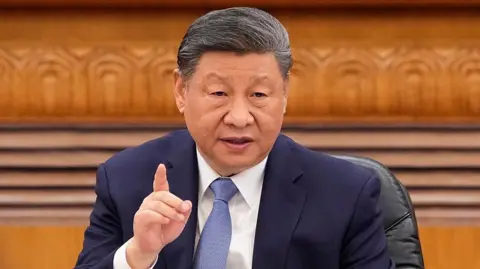In recent developments within the complex web of international trade relations, China has accused the United States of “severely violating” their tariffs truce, which was initially meant to ease tensions between the two economic giants. The assertion, made by China’s Ministry of Commerce, emphasizes that the US has “seriously undermined” the agreement established during negotiations in Geneva last month. These negotiations resulted in both nations agreeing to reduce tariffs on various imported goods from one another, a move aimed at stabilizing their fraught economic relationship.
The spokesperson for the Ministry explicitly pointed out that the actions taken by the United States contradict the consensus reached in a significant phone call earlier this year between Chinese leader Xi Jinping and US President Donald Trump. This discord became increasingly pronounced after Trump accused China of having “totally violated” their agreement, escalating the ongoing trade spat that has significant implications for global markets.
On the ground in Washington, US Trade Representative Jamieson Greer added weight to Trump’s claims, stating that China had failed to eliminate non-tariff barriers as part of the deal. This failure was significant since it directly affects how products are traded and what tariffs are applied, ultimately influencing prices for consumers and businesses alike.
The trade truce, which was brokered during this Geneva meeting in May, saw the US slashing tariffs on Chinese goods from a prohibitive 145% down to 30%. In reciprocation, China reduced its tariffs on US goods from 125% to a more manageable 10%. However, the spirit of cooperation demonstrated in Geneva appears to have eroded. China noted various violations from the US side, including actions such as halting the sales of critical software used for computer chip design to Chinese firms, warning against the utilization of technology from major Chinese vendor Huawei, and making changes to visa policies affecting Chinese students wishing to study in the United States. These measures are perceived as direct challenges to prior agreements and trust built between the two countries.
In response to the growing tensions, two high-ranking officials from the White House hinted that a conversation between Trump and Xi could be forthcoming. Treasury Secretary Bessent suggested in an interview with CBS News that the two leaders would soon have discussions to address lingering trade issues, providing some hope for resolving the disputes. However, specific details about when such discussions would take place remained under wraps.
Moreover, National Economic Council Director Kevin Hassett mentioned during a separate interview on ABC News that both sides were open to dialogue. This potential communication could be pivotal in determining how the ongoing trade negotiations proceed. He indicated a sense of cautious optimism about the meetings while recognizing the need for preparedness in case the talks do not unfold as desired.
The situation has been compounded by President Trump’s recent announcement concerning tariffs on steel and aluminium. The President revealed intentions to double existing tariffs from 25% to an impactful 50%, beginning Wednesday. In a rally in Pittsburgh, Pennsylvania, Trump articulated that this move was necessary to bolster the domestic steel industry while also reducing dependence on foreign entities, notably China.
As the narrative unfolds, it remains clear that the future of US-China relations heavily hinges on the outcome of high-level discussions and the vital adjustments both nations are willing to make concerning their trade practices. Only time will tell if this friction can be alleviated or if it will escalate further, impacting not only economic relations but global economic stability as a whole.
Thus, a new chapter in the US-China trade saga appears to be on the horizon, filled with both tension and the promise of dialogue that may well reshape the economic landscape.



